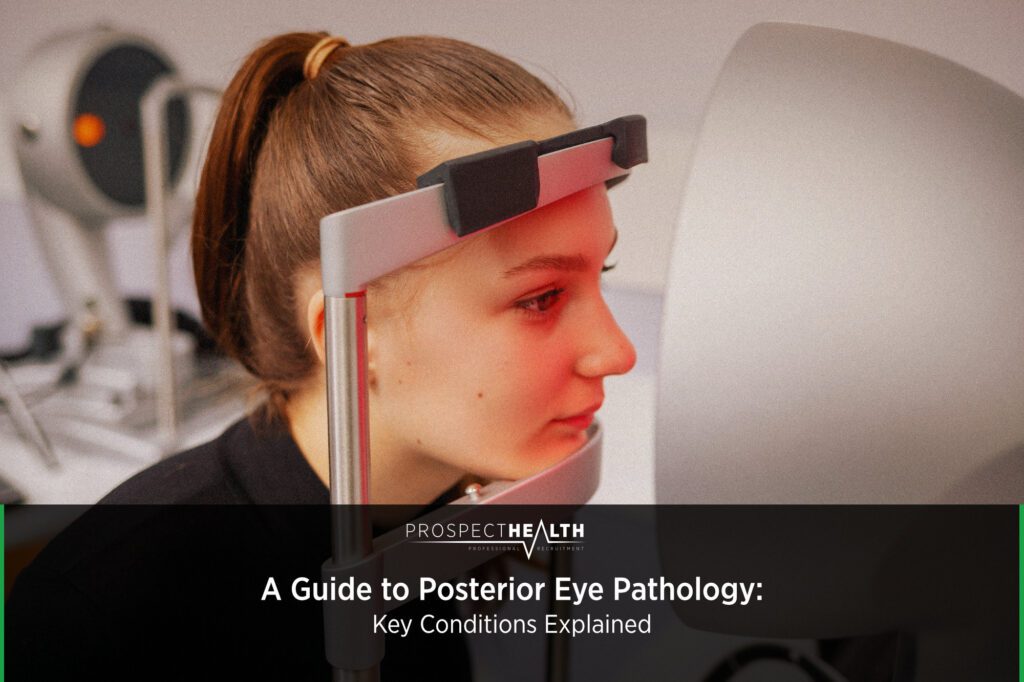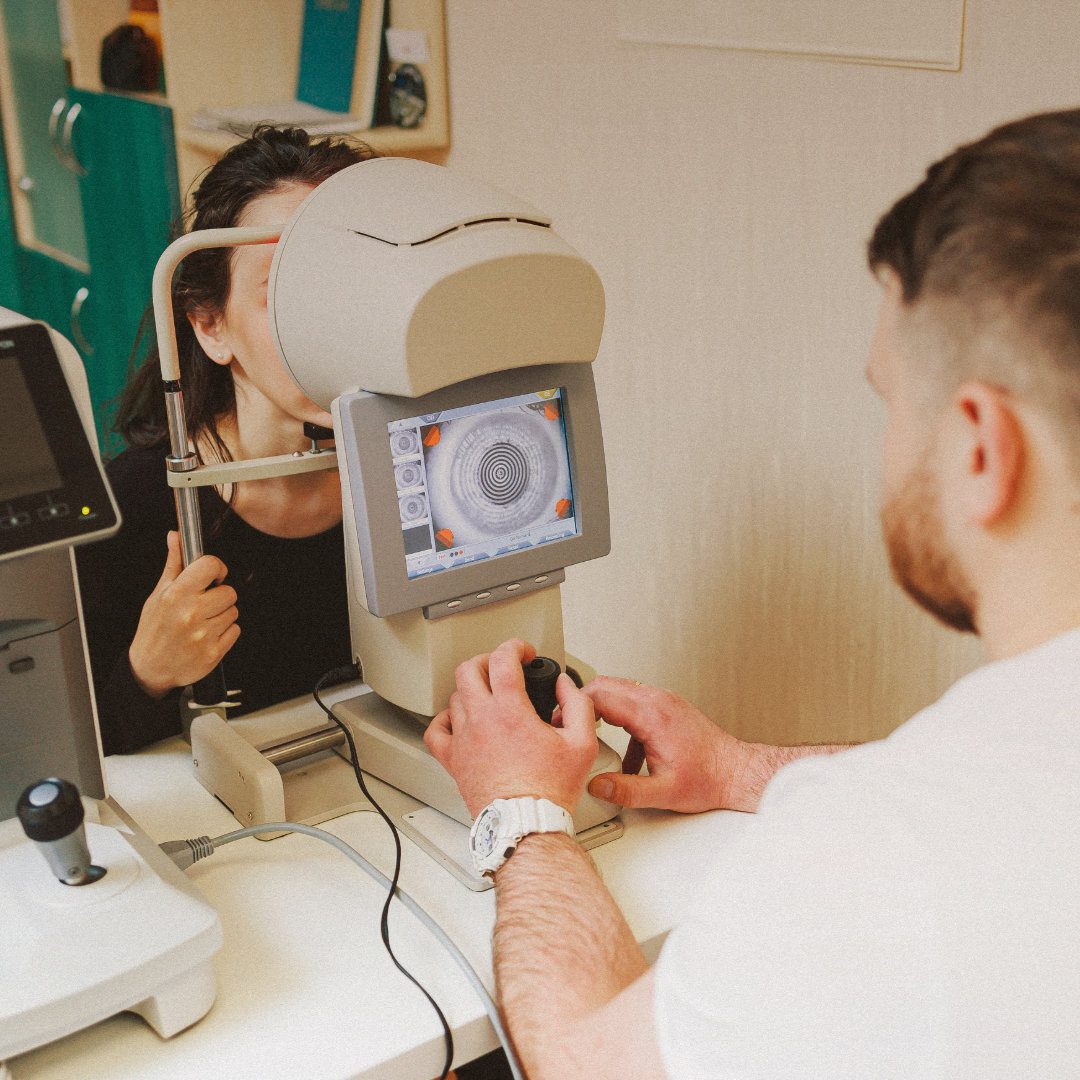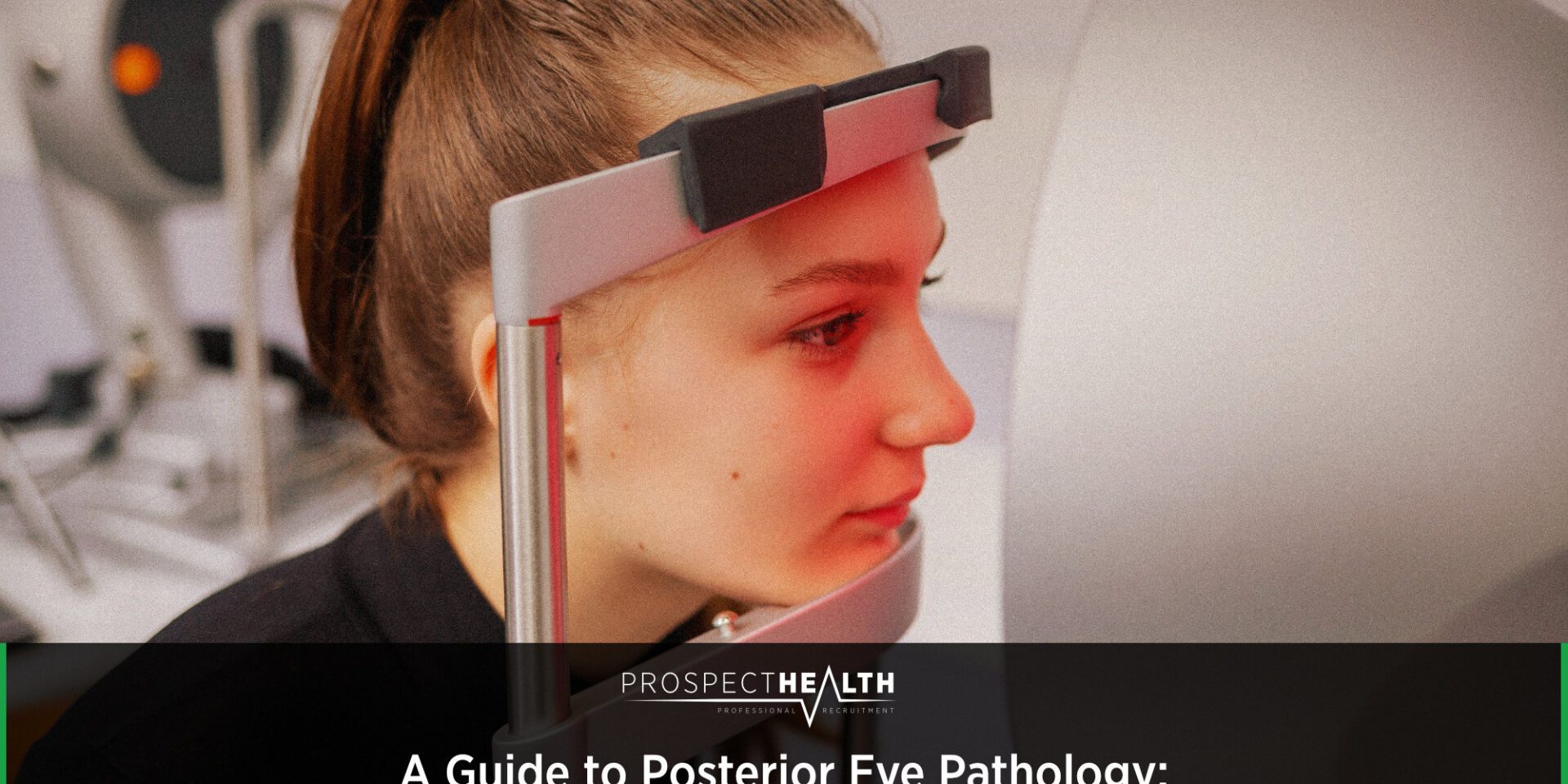
A Guide to Posterior Eye Pathology:
Key Conditions Explained
Understanding posterior eye pathology is essential for optical clinicians to recognise the impact of systemic health on vision.
Whether you’re revising for exams or brushing up on clinical practice, this webinar reinforces how vital posterior pathology knowledge is for protecting patients’ sight.
To access all our pre-recorded webinars via our online learning management system, please complete the form below:

Access our pre-recorded Optometry Webinars
Here’s a concise summary of the key points from our Posterior Eye Pathology webinar.
Diabetic Retinopathy
Diabetes affects the body’s smallest blood vessels, including those in the eyes. High blood sugar damages these vessels, making them fragile and prone to leakage. When oxygen delivery to the retina decreases, the body tries to grow new vessels, but these are brittle, often breaking and leading to bleeding and scarring.
Signs to look for:
- R1 (background): Microaneurysms, dot-and-blot haemorrhages
- R2 (pre-proliferative): Cotton wool spots, venous beading/looping, flame haemorrhages
- R3 (proliferative): Neovascularisation, pre-retinal haemorrhages
Maculopathy (M1): Exudates near the macula may threaten central vision.
Management:
- R1: Monitor
- R2: Routine referral
- R3: Urgent referral → possible laser (PRP), vitrectomy, or anti-VEGF
- M1: Consider anti-VEGF, focal laser, or steroid injections
Hypertensive Retinopathy
High blood pressure causes thickening of arterial walls, narrowing blood flow to the retina. Over time, this leads to vessel changes, haemorrhages, and optic nerve swelling in severe cases.
Grading:
- Grade 1: Generalised narrowing
- Grade 2: Focal narrowing, AV nipping, “copper wiring”
- Grade 3: Haemorrhages, exudates, cotton wool spots, macular star
- Grade 4: Severe changes + optic disc swelling (emergency)
Referral:
- Undiagnosed hypertension/diabetes → GP
- Retinal vascular changes → ophthalmology
- Papilledema → emergency referral
Age-Related Macular Degeneration (AMD)
- Dry AMD: Characterised by drusen and, in later stages, geographic atrophy.
- Management: Lifestyle advice (AREDS2 supplements, leafy greens, UV protection, no smoking), monitoring with Amsler grid.
- Wet AMD: Caused by abnormal vessel growth and leakage under the macula.
- Management: Anti-VEGF injections, sometimes laser.
Retinal Detachment
The vitreous gel can pull on the retina, creating tears that allow fluid to leak underneath, causing detachment.
Types:
- Rhegmatogenous: Caused by retinal tear
- Exudative: Fluid from underlying conditions (e.g., AMD, tumours)
- Tractional: From scarring (e.g., uncontrolled diabetes)
Key signs:
- Flashes (brief, peripheral “lightning” due to traction)
- Floaters (clumped cells casting shadows)
- Schaefer’s sign (pigmented cells in vitreous, “tobacco dust”)
Management:
- Urgent referral if retinal tear/detachment suspected
- Surgery may include vitrectomy with gas/oil
Other Posterior Pathologies
Epiretinal Membrane (ERM)
- A fibrocellular “sheet” over the retina, often after PVD.
- Symptoms: Distorted or blurred central vision.
- Management: Observation if mild; vitrectomy + membrane peel if severe.
Central Serous Retinopathy (CSR)
- Fluid buildup under the macula, often linked to stress.
- Usually resolves in 1–6 months; persistent cases may need laser, photodynamic therapy, or anti-VEGF.
Macular Holes
- Graded by OCT into stages 1–4.
- Symptoms: Central vision loss.
- Management: Monitoring for early holes; vitrectomy with gas for larger/full-thickness holes.
Best Disease (Vitelliform Macular Dystrophy)
- Juvenile inherited macular dystrophy.
- Classic “egg yolk” appearance progressing to scrambled-egg-like changes.
- Adult-onset form is milder but can mimic AMD.
Key Takeaways
- Systemic health (diabetes, hypertension) has a major impact on eye health.
- Recognising early signs of retinopathy or macular disease allows for timely referral and intervention.
- Patient education, explaining complex processes in simple terms helps individuals understand the importance of controlling systemic risk factors.
Are you preparing for your OSCEs and looking for career guidance too?
Prospect Health works with over 100 employers eager to hire newly qualified optometrists.
Alongside revision support, we can help you secure the right role for you when you qualify.
You can call us at 01423 813 452 or email us at [email protected]
Or view the rest of our Optometry jobs here!

Next up: Understanding Colour Vision Defects: Key Insights for Optometry and pre-registration Students
Colour vision testing is a topic that comes up time and again during pre-reg training and assessments.
In a recent webinar, optometrist Anisa shared her knowledge and revision tips on this essential competency, covering everything from the genetics of colour vision to the practicalities of testing in clinic.

Talk to a specialist:
VICTORIA ASHTON
Specialist Recruitment Consultant
I am an experienced recruitment professional with a diverse background spanning GP recruitment, the Commercial sector, Practice Management, and most recently, Optometry.
After completing my degree as a mature student, I embarked on my recruitment career and have since found the industry both challenging and rewarding…


